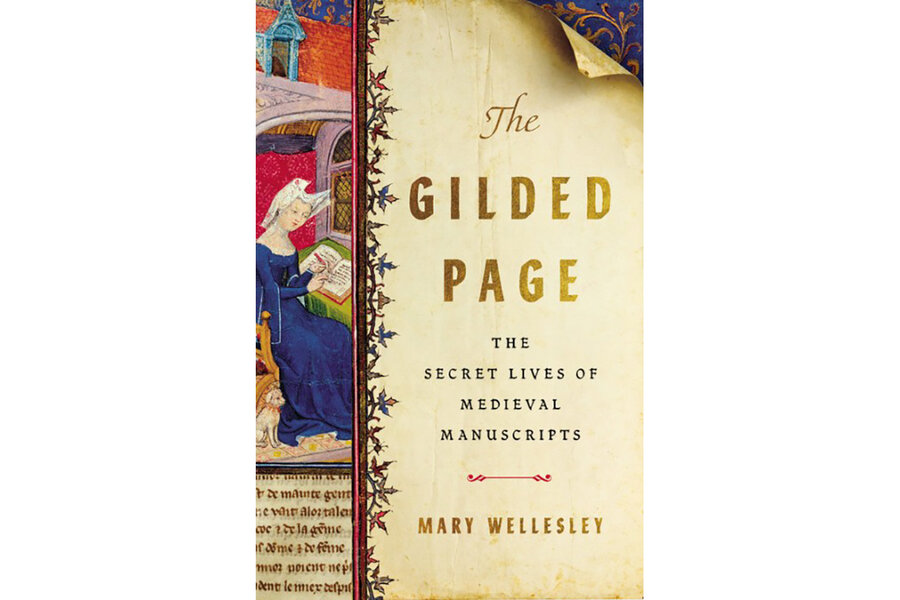The gilded pages that brought light to the Dark Ages
Loading...
King Henry VIII largely deserves blame for the dearth of medieval manuscripts today. Within two years of breaking with the Roman Catholic Church in 1534, he ordered all of England’s monasteries destroyed and their libraries burned or dispersed. One horrified commentator of the time wrote that precious manuscript pages were being used to wipe boots and wrap groceries.
These are the kinds of stories explored by Mary Wellesley in “The Gilded Page: The Secret Lives of Medieval Manuscripts.” She describes the crumbling parchments that survived Henry’s purge as “tangible, smellable, visual encounters with the past.” Thanks to Wellesley’s expertise and passion for her subject, we practically hear the voices of the scribes and artists who produced these rare relics of the Middle Ages.
The medieval period stretches from roughly the end of the Western Roman Empire to the beginning of the Renaissance (A.D. 450 to A.D. 1450). The epoch is often misconstrued as the Dark Ages – a barren interlude between the glories of Rome and the rebirth of art and learning. The main monuments during those thousand years are Romanesque and Gothic cathedrals. In Wellesley’s view, ancient manuscripts are an equal (though less accessible) legacy. Their illuminated pages bring light to the Dark Ages.
The book discusses English manuscripts produced from the eighth century to the 1600s. It makes clear how big a role happenstance played in their survival. The Cuthbert Gospel, made around the late seventh century, was discovered when a tomb was opened after 400 years. This earliest intact book in Europe “speaks to us,” Wellesley writes, “across the centuries.” It offers evidence of a flourishing monastery and international center of learning in the early days of Christianity.
Another important manuscript, “The Book of Margery Kempe” (circa 1373-1438), was discovered in 1934 by a family rummaging in a cabinet for pingpong balls. Dictated by an illiterate woman, a mother of 14 children who wished to leave an honest record of her life, it is the first piece of autobiographical writing in English.
Wellesley, who teaches medieval language and literature at the British Library, dispels the notion that monks were the exclusive makers of manuscripts. Nuns could be highly educated and functioned as both anonymous scribes and painters of dazzling miniatures in illuminated manuscripts. Women also wrote of their experiences. Julian of Norwich produced one of the earliest known texts written by a woman in the West, “Revelations,” a description of her visions while cloistered in a cell in the late 1300s.
Our knowledge of the past is woefully incomplete, a victim, Wellesley writes, of “patriarchalism infused with prejudice” that condemned female voices to obscurity. While 92 copies of the 14th-century “Canterbury Tales” by Geoffrey Chaucer (a well-connected courtier) survive, the writings of a female Welsh poet named Gwerful Mechain (circa 1460-1502) are virtually unknown. Her irreverent writing about women’s bodies was considered by male scholars too profane to admit into the canon.
Some of the disappearances from literary history were due to the texts’ fragility. In 1731 fire almost claimed the seventh-century epic “Beowulf.” The hero-tale of Anglo-Saxon warrior society in Old English was preserved from the oral tradition in a manuscript in the late 10th or early 11th century. After a disastrous fire in the Royal Collection of Manuscripts, only one copy remains, its edges singed and flaking.
Accessing the manuscripts that survive is not easy. I recall my disappointing pilgrimage to Trinity College in Dublin to see the “Book of Kells” manuscript, produced around A.D. 800. Only a single page was on view, under glass, surrounded by an impenetrable gaggle of spectators. Reading the rich histories behind medieval manuscripts in “The Gilded Page” broadened my appreciation of these cultural treasures.
Gutenberg’s 15th-century printing press put a stop to the laborious production of handmade texts. Just as the internet ushered in a new culture of information access, the use of movable type transformed society. Still, the illuminated manuscripts offer windows into the past. They are highly perishable, but their aesthetic and historical value remains intact.






